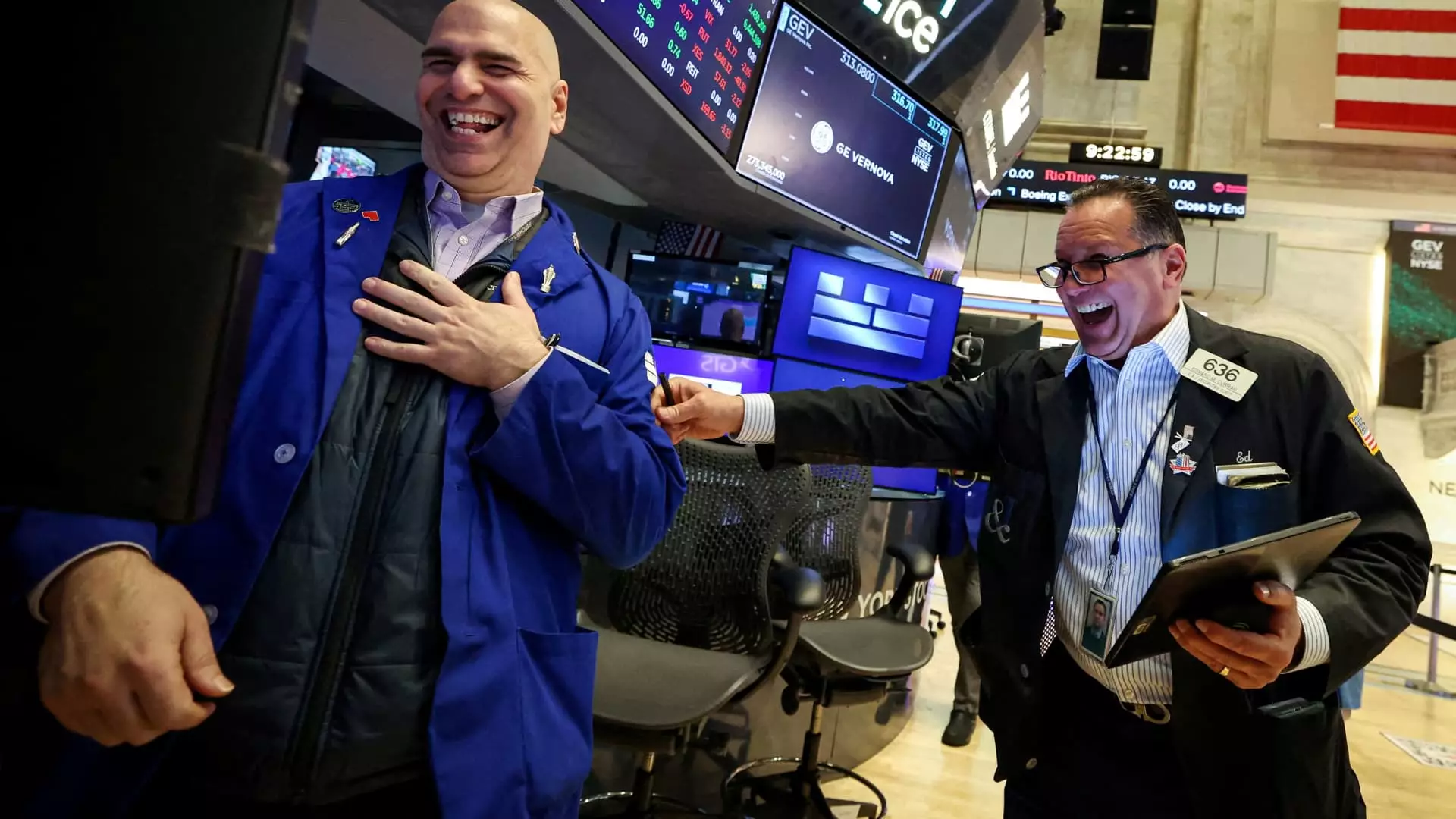In the ever-evolving landscape of the stock market, short selling can occasionally serve as a double-edged sword. Recently, the market experienced a substantial rally, seemingly unanchored by any intrinsic economic developments. A principal mechanism at play here was the frenetic activity of short sellers scrambling to cover their positions, desperately attempting to mitigate losses. This flurry of buying, often termed as a “short squeeze,” tends to create a superficial upward momentum that can mislead investors about the health and sustainability of the market. The recent behavior of short sellers highlights just how reactive and fragile market sentiment can be, tying it disproportionately to the whims of hedge funds rather than organic investor confidence.
Focusing on the mechanics, a short seller borrows shares and sells them at current market prices, anticipating a future decline. However, when the market defies expectations and rallies, these investors find themselves cornered, forced to buy back already borrowed shares at inflated prices. This panic buying injects a burst of artificial demand into the market, which can result in dramatic price appreciation that doesn’t necessarily reflect underlying economic fundamentals. Recent data from Goldman Sachs illustrates this very scenario, where aggressive short positions led to heightened volatility as hedge funds faced enormous pressure to cover their shorts amid a seemingly recovering market.
The Role of Political Commentary in Market Dynamics
A significant player in this chaotic stock market theater is, unsurprisingly, President Donald Trump. His comments—often perceived as whimsical—tend to shape market reactions far beyond their grounding in reality. Recently, statements regarding a potential trade deal with China or vague reassurances about Federal Reserve policies have been influential, albeit often devoid of substantial backing. The stock rally, which saw the Dow Jones surge dramatically, can be attributed more to reactive trading strategies rather than any groundbreaking policy changes.
The unpredictability of Trump’s pronouncements exacerbates an already volatile investment environment. As he oscillates in his messaging about trade negotiations and monetary policy, investors are left to navigate a landscape fraught with uncertainty and risk. This is particularly evident in the continued momentum of the stock market rally, demonstrating that it is more about psychological responses to tweets or statements rather than sound economic indicators. The recent surge in the market could well be described as a fragile bubble, where each frantic move by short sellers and impulsive commentary from the White House can send it spiraling in either direction.
The Illusion of Stability Amid a Short-Covering Bonanza
Even in light of impressive stock gains—such as the Dow’s staggering 1,100-point increase at one point—more astute investors must recognize the limitations of this surge. A closer examination reveals that this rally lacks substantial backing from traditional metrics like corporate earnings or economic indicators. Instead, market analysts have pointed out that the rapid ascent largely stems from hedge funds trying to extricate themselves from acute losses, rather than an indication of long-term economic health.
Goldman Sachs’ managing director, John Flood, offered a sobering perspective, cautioning traders that the rally’s foundation may not be as solid as perceived. “I am closely monitoring the market’s shift from short-covering towards genuine long positions,” he articulated, indicating a reluctance of hedge funds to transition to a more stable investment posture. This inherent uncertainty underscores a significant risk: while the short squeeze may generate temporary gains, it does little to inspire conviction among traditional long-term investors.
As the market scaled these heights, one must wonder if the exuberance is a genuine reflection of economic recovery or simply window-dressing for a market fraught with peril. Would-be investors need to approach this situation with caution, resisting the allure of apparent stability that may rise and fall with the latest tweet or short-covering frenzy. The repercussions of such volatility can be profound, as history has shown that short-lived rallies often give way to disillusionment when investors realize the absence of substantial economic backing.
This precarious balance of investor sentiment, political commentary, and impulsive trading behaviors paints a concerning picture for the future. The ongoing susceptibility of the market to short squeezes and reactive trades poses a genuine challenge to anyone attempting to navigate these choppy waters in hopes of finding stable footing.

